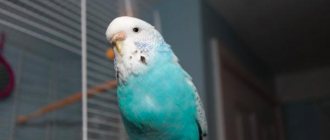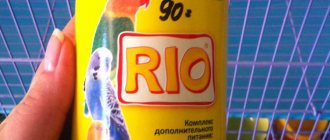Causes
Birds can also be susceptible to diseases. If the parrot has become lethargic, this is a sign that he is unwell. In most cases, the manifestation of symptoms of the disease is associated with improper care of the bird.
Fast metabolism contributes to the rapid development of various pathologies. If the breeder does not learn to react correctly and in a timely manner to external changes in the behavior of the bird, this can lead to a severe form of illness or death. The appearance of lethargy is the first signal and symptom to determine the causes. It may develop slowly and in some cases appears suddenly. The reasons are varied:
- Diseases (colds, infectious, non-infectious, parasitic);
- Poisoning (vomiting, refusal to eat, black droppings);
- Trauma (physical injuries received during flight or careless handling of the bird);
- Psychological factor (depression due to separation from the couple, stress, change of owner).
Most often, the reason lies in poisoning and depression.
Why did the parrot stop flying: reasons
The most common reason why budgerigars and representatives of other species kept at home do not fly is an incorrect diet. But there are many other reasons. It is worth considering separately the most common of them.
Unbalanced menu
Improperly formulated nutrition leads to the fact that the parrot's metabolism is disrupted. The latter in turn causes in birds:
- Apathy;
- feather loss;
- lethargy;
- general weakness;
- decreased or complete loss of activity;
- drowsiness.
All these symptoms indicate a lack of essential minerals and vitamins in the parrot’s menu. The bird's diet must include:
- Wheat;
- millet of all varieties;
- oats;
- seeds – flax, hemp.
Another essential component of the diet is water. You need to refresh your drink and wash the drinking bowl every day.
Parrots love nuts and seeds, but these foods are harmful to them. Therefore, it is better to refrain from such treats and prefer pieces of fruit as a treat or reward.
The parrot is not allowed to give human food. Salt and sugar are tantamount to deadly poison for birds.
It is recommended to feed your pet bird with special ready-made food for parrots, purchased at a pet store. Its composition is balanced, all components are contained in the correct proportions. When purchasing, it is important to check that the packaging is not damaged and its seal is not broken.
To form a healthy diet for a parrot, it would be useful to include various useful supplements in the menu:
- a vitamin cocktail of seasonal fruits and berries (apples are a mandatory component, they need to be either cut into pieces or ground);
- seasonal vegetables;
- grain – steamed or sprouted (leftovers not eaten by the bird should be thrown away after a few hours, so there’s no need to cook a lot);
- various cereals;
- mineral stone (necessary for natural grinding of the beak);
- sand – organic and inorganic;
- sepia.
After revising the menu, the condition of the feathered pet usually returns to normal, and the parrot regains the strength to fly.
Incorrect feeding regimen
A similar reason why a parrot does not fly is a disrupted diet and inappropriate portion sizes. The optimal daily amount of food for a parrot is on average two teaspoons of grain mixture. The parrot is fed twice a day. But food should always be freely available to the bird, since starvation is detrimental to parrots. Under no circumstances should bowls be allowed to empty.
In addition, the parrot must have constant free access to drink - clean water (ideally bottled).
Obesity
The presence of all necessary healthy components in the diet is a guarantee that the bird will be full. But if the food lacks nutrients, the bird begins to eat more, but the benefits of the food do not increase. Rather, on the contrary, a parrot that consumes a large amount of food gains excess weight and, as a result, stops flying. That is why a balanced diet is one of the main conditions for the health and full life of a feathered pet.
Amyotrophy
The reasons why a parrot cannot take off or flies poorly and falls is muscle atrophy. If a bird has limited physical activity - it does not leave the cage and is constantly locked up, then without regular training in the form of flights, the muscles of the wings gradually lose their purpose.
If a bird is cramped in a cage, its muscles also atrophy. A bird needs a cage at least 6–8 times larger than the bird itself. It is generally recommended to keep large parrots not in cages, but in aviaries.
No matter how well-chosen the cage, the best option is to regularly let the bird fly around the room and allow it to move freely.
Physical injuries
Injuries and damage are common occurrences in the life of a bird. This most often concerns the legs and wings. During the flight, the pet can hit - against furniture, window glass, etc. Sometimes the parrot gets injured or even gets stuck between the bars of the cage when it tries to get free.
If you discover an injury in your pet, you should immediately contact a veterinarian. Fractures in parrots heal in less than two weeks, and if the bones heal incorrectly, flight will most likely become impossible for the bird.
Stress, depression
Stress for a bird is fraught with any unexpected changes in life - from a change of place of residence and environment to fear for its safety (if a cat lives in the house, a person treats a bird roughly, etc.).
The first sign of nervous tension and shock in a pet is feather loss. In addition, the parrot may lose its appetite. The next stage of shock is the cessation of flights.
If your parrot has these symptoms, you need to identify the source of stress as soon as possible and try to either eliminate it or minimize its impact (avoid contact between the cat and the bird, etc.).
Infectious diseases or parasitic lesions
It happens that a cockatoo or a budgie does not fly due to illness. They are usually caused by infections or parasites. Bird diseases are quite difficult to diagnose and even more difficult to cure your pet. Only a veterinarian can determine the origin of the disease. You should contact him immediately if you suspect an illness. Only a veterinarian can diagnose the bird and select the correct treatment.
Diseases
Detecting the disease in the early stages is almost impossible to diagnose in most cases, so careful monitoring of the bird’s behavior will help prevent negative consequences.
Lethargy and inactivity of the parrot, lack of reaction to the owner’s voice indicate his illness. The bird's immune system mobilizes all its forces to fight the source of the disease. During the struggle, body temperature rises. The feathered creature fluffs itself up, trying to create air cushions between the fan of feathers, thus retaining heat. Inactivity is a consequence of the body using excess energy to prevent illness. The internal struggle is not visible, and external signs are lethargy and apathy.
In case of serious illnesses, the bird cannot help itself on its own. Drug treatment and a number of physical procedures will be required.
The benefits and dangers of flying
As you probably already understood, the fact that your parrot cannot fly from branch to branch or indoors indicates that it has some kind of deviation.
The danger of such a lifestyle is that birds can develop diseases such as obesity, osteoporosis, depression, muscle atrophy, etc. If the parrot leads an active lifestyle, then there will be no reason to worry about its physical shape.
At the same time, many novice bird breeders make the same mistake. They themselves often hinder and limit the freedom of birds. A common reason for this is often the desire to protect their charges from other pets like cats or to prevent them from flying away in cases where the windows in the room are constantly open.
Injuries
The causes of injuries are varied. From joint dislocations to head and neck contusions. Fractures of leg bones, wings. A bird can receive some injuries on its own during open flight, colliding with various objects.
External causes of injury are both the person himself and the animals living with him. Cats and dogs, while playing or following their instincts, cause mechanical damage to the parrot (bite wounds). Young children, when playing with birds, do not always control their own strength, which can lead to fractures of the body bones, as well as disruption of the functioning of internal organs. If your pet is injured, you can judge by the following signs:
- loss of balance;
- the parrot is lethargic and falls from its perch;
- lameness;
- unnatural position of the wing or legs;
- presence of bruises;
- turning blue;
- inability to hold the head in normal position.
Depending on the symptoms, assistance should be carried out competently, without aggravating the consequences of the injury. If there is no experience, the bird will need to be shown to a veterinarian.
Bruises and sprains
If the bird tucks its limb under itself and tries not to lean on it, it is noticeable that the parrot has injured its leg by the swelling and redness that appears, the pain syndrome must be relieved. For this, special gels are applied; it is better to make a compress.
If the limb has acquired a bluish tint, the parrot's paw hurts, and the joint is in the wrong position, the bird has a dislocation. An ornithologist should treat such an injury. It is almost impossible for an amateur to correct a dislocated bird at home.
Psychological factor
Oddly enough, the cause of lethargy without the above symptoms may be the appearance of stress in a parrot. A highly organized nervous system in the process of evolution allowed the bird to develop sense organs and endow it with good memory. When artificially bred and kept, a bird can become very attached to its owner. Her favorite cage and toy become an integral part of her life. Drastic changes in the life of a bird often lead to severe stress. Depression can occur due to separation from your partner.
When do parrots start to fly?
Almost every bird is created by nature to fly. Even the flightless Kakapo parrot is capable of gliding from a tree branch, to say nothing of other parrots. Flight is a vital necessity for a bird, even if it is kept at home.
A pet that has the opportunity to regularly fly outside its cage is much healthier physically and mentally than one that does not have this opportunity.
At approximately one month of age, newborn chicks are already capable of making their first flights.
When you buy a parrot, you need to give it time to adapt. You should not let him out of the cage from the first days. A bird that has not explored its new territory may rush around the room in a panic, flying into furniture, mirrors, and hitting window panes. All this is fraught with serious injuries. Therefore, the pet should be given at least 2 weeks to explore the new environment and get used to it. How to make adaptation after purchasing from a bird as easy as possible, read the link.
When the bird begins to trust you and is not afraid of your hand, you can begin to let it fly freely around the room. Take your time with this, otherwise you will face another problem: how to later catch a parrot that has flown out of its cage.
Attention! Make sure that the bird can fly without risking its life: close the windows, remove all objects that are dangerous for it, remove pets that can attack it, control the interaction of the pet with a small child.
Watch this video for information about why parrots actually fly, what flight gives a bird and how to train them to fly correctly:











